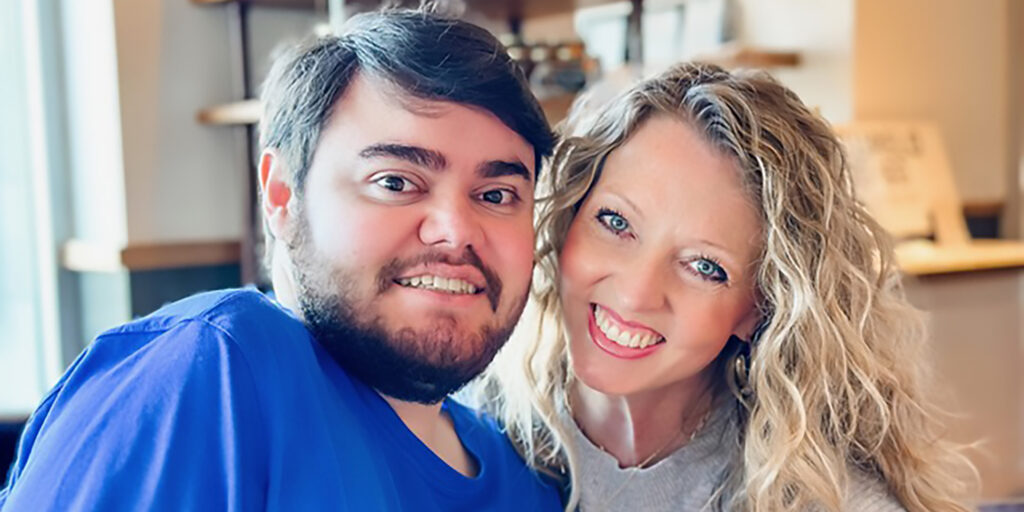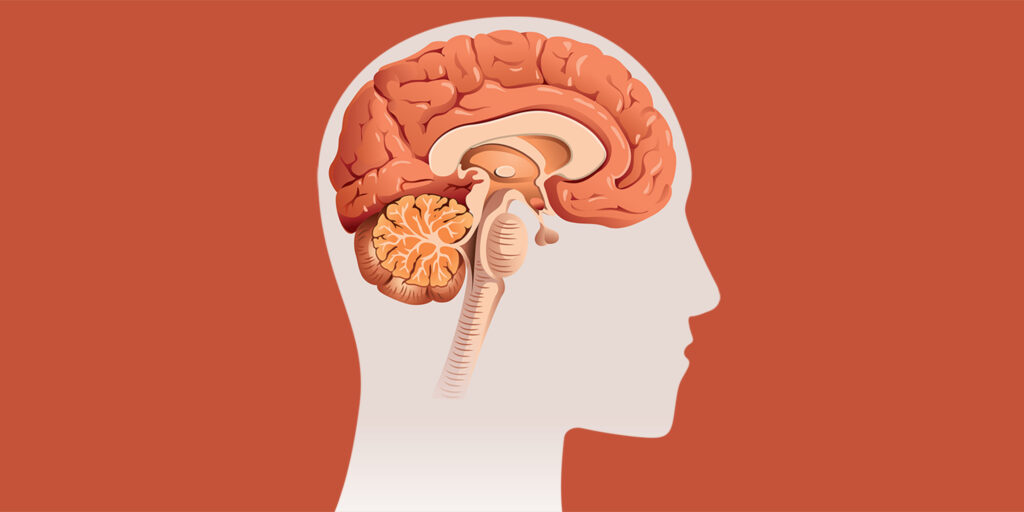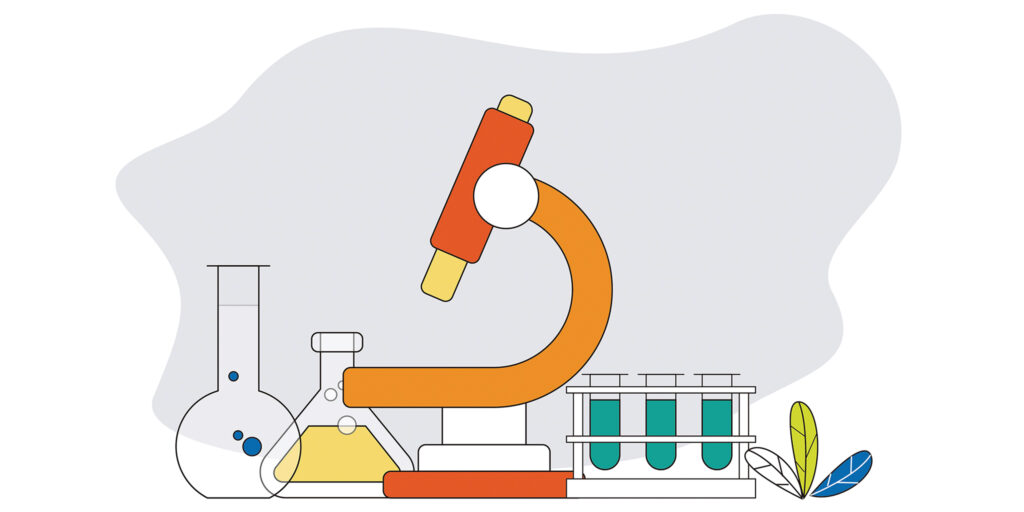
Say Yes to Gene Therapy? Factors to Consider When Gene Therapy Is an Option
By Amy Bernstein | Friday, November 14, 2025
5 Second Summary
Gene therapies are increasingly available for muscular dystrophies and other neuromuscular diseases. My Gene Therapy Journey is a Quest Media series that gives members of the neuromuscular community a platform to share their experiences with gene therapies — both approved therapies and those in clinical trials — and provides essential information to help individuals and families make decisions about gene therapies.
Dylan Miceli-Nelson, 24, and Caffrey Werner-Lester, 15, have a lot in common. They are both young men living with Duchenne muscular dystrophy (DMD), and they both had the opportunity to receive a gene therapy for DMD. But here their stories diverge: Caffrey decided against the gene therapy, while Dylan decided for it.
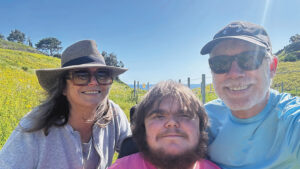
Carrie Miceli, PhD, and Stanley Nelson, MD, with their son Dylan (center)
Neither of them took this choice lightly. They made their decisions after learning as much as they could about their own diagnosis and the gene therapy they were considering, as well as discussing the risks and benefits — and their own personal goals — with their parents and their healthcare teams. Ultimately, they both feel they made the right decision.
That is the essence of gene therapy decision-making. It is a personal decision that each individual and family must make by weighing all the relevant factors and making the choice that is best for them.
New therapy opportunities on the horizon
Right now, not everyone in the neuromuscular disease community has access to gene therapy. The US Food and Drug Administration (FDA) has approved two gene therapies for neuromuscular diseases: Zolgensma® for spinal muscular atrophy (SMA) in 2019 and Elevidys® for DMD in 2023.
However, there is a robust research pipeline, and initiatives like MDA’s Kickstart for Ultra-Rare Neuromuscular Diseases are helping to push gene therapy development forward. Gene therapies are being explored in clinical trials for amyotrophic lateral sclerosis (ALS), Charcot-Marie-Tooth disease (CMT), congenital myasthenic syndromes (CMS), Friedreich ataxia (FRDA or FA), limb-girdle muscular dystrophy (LGMD), Pompe disease, and more.
Already, many members of the neuromuscular community have had the opportunity to receive gene therapies through clinical trials, and more gene therapies are expected to be approved in the coming years.

Michelle Werner
It’s a good idea to be prepared for new opportunities that may arise. Dylan and Caffrey both have parents in biomedical fields who were eagerly following the development of gene therapies for DMD.
Dylan’s parents, Carrie Miceli, PhD, and Stanley Nelson, MD, are professors and researchers at the University of California, Los Angeles (UCLA). They started the Center for Duchenne Muscular Dystrophy at UCLA after Dylan was diagnosed. When they learned that Sarepta Therapeutics was recruiting nonambulatory (unable to walk) boys and men with DMD for a gene therapy clinical trial, Dylan enrolled. In 2021, at age 20, he received the experimental gene therapy that became Elevidys.
Caffrey’s mother, Michelle Werner, is the CEO of Alltrna, a biotechnology company. “After Caffrey was diagnosed, we were very eager to participate in clinical trials, especially for gene therapies, but he was not eligible for any of the trials that were underway,” she says.
Michelle and her husband, William Lester, paid close attention to the news after the FDA initially approved Elevidys for boys ages 4 and 5. Caffrey was 14 when the FDA expanded the approval to ages 4 and up in 2024. “That’s when we started to get a lot more serious in terms of considering it as an approach for Caffrey,” Michelle says.
Benefits of gene therapy
Gene therapies aim to treat the root cause of genetic diseases by replacing a mutated gene with a working gene, repairing a flawed gene, or altering how a gene is controlled.
Zolgensma and Elevidys are both gene replacement therapies. They work by delivering a functional gene into the body using an adeno-associated virus (AAV). The AAV is not harmful, but it can enter cells to deliver a gene that provides new instructions to make a needed protein.
“The goal of gene replacement therapy is to restore the missing or dysfunctional gene, allowing for protein production with the aim to lessen or slow disease progression,” says Diana Bharucha-Goebel, MD, Medical Director of the Gene Therapy Center of Excellence at Nationwide Children’s Hospital.
For some neuromuscular diseases, the best approach might not be to add a working gene but to fix a flawed gene, increase the expression of a gene, or “turn off” an abnormally active gene. Promising gene therapy methods being developed include gene editing, where a targeted section of DNA in the mutated gene is deleted or replaced, and RNA-based gene therapies, which target genetic material in RNA to modify how proteins are made. Therapies using these methods are in preclinical studies and clinical trials.
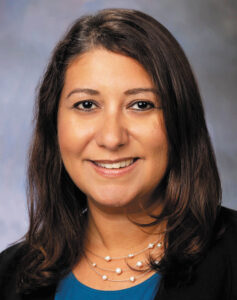
Diana Bharucha-Goebel, MD
Most gene therapies are designed as one-time treatments and are intended to lead to long-term, lasting improvements in function and overall health. However, they will not restore muscle or nerve cells that are already lost to disease progression.
“To maximize the benefit, time to treatment is important,” Dr. Bharucha-Goebel says.
For example, with SMA, administering Zolgensma early in infancy has the potential to stop damage before it occurs. With Elevidys for DMD, younger, ambulatory (able to walk) patient groups have experienced the most benefits in clinical trials.
“We’re at an exciting point where we’re trying to find strategies that work for different disease groups, depending on the type of genetic change, the size of the gene, and what cells in the body you’re targeting,” Dr. Bharucha-Goebel says. “The successes and knowledge learned from approved and previously studied therapies will hopefully pave the way for ongoing exploration for gene replacement therapies for other, more rare neuromuscular conditions where there is still great unmet need.”
Risks of gene therapy
For all the promise of gene therapies, there are real risks. Dylan’s and Caffrey’s parents were clear-eyed about this.
Gene replacement therapies using AAVs cause an immune response. Even though the virus is harmless, due to the large dose required, the body responds by activating different pathways of the immune system.
There is potentially more risk if the therapy induces the body to produce a protein it has not seen before. “The body may react by attacking the new protein, seeing it as foreign,” Dr. Bharucha-Goebel says.
Another serious concern is liver injury, a common side effect of AAV-based gene therapies. In July, Sarepta paused dosing of Elevidys for nonambulatory patients after two deaths from acute liver failure were reported. Researchers are continuing to study different methods to deliver large doses of AAV-based gene therapies safely.
While we will continue to learn more about commonly observed side effects, it is not always possible to predict the type or severity of a response to gene therapy in an individual. Unexpected and severe side effects can occur following gene therapy.
While extreme events are uncommon, they reinforce the need for caution before and after gene replacement therapy, including safety monitoring.
“We are very closely communicating with our families in the hours, days, and weeks after gene transfer and want to know about any changes in the child and how they appear, their energy level, or if they’re seeming in any way unwell,” Dr. Bharucha-Goebel says. Monitoring often continues for months after gene therapy administration.
Redosing not yet possible
Another concern is that, at this time, AAV-based gene therapies can only be given once.
“I describe it as the opportunity cost that comes with the decision,” Michelle says. “With any AAV-based therapy, you’re likely going to be able to get one in your lifetime, and then when you develop antibodies, you’re unlikely to ever be able to get another.”
That means that if an opportunity comes around to take a new approved gene therapy or enter a clinical trial for a potentially better approach, someone who has already received an AAV-based gene therapy would not be eligible.
However, Dr. Nelson points out that living with a neuromuscular disease carries risks, too. “There’s a risk every year of losing skills. With DMD, there’s a risk of death every year, and that has to be the counterweight to the risks of the actual therapy,” he says.
At 20, Dylan was not walking and was in danger of losing more functions, such as feeding himself. This was a big part of the family’s decision for Dylan to receive the gene therapy.
Factors to consider
Every individual’s and family’s calculus for weighing risks against benefits is different.
“The decision is never one-size-fits-all,” Dr. Bharucha-Goebel says. “Each person will have unique circumstances around their baseline laboratory findings, their clinical status, their genetic variant, as well as personal considerations around their current level of function, hopes or goals as related to a therapeutic approach, and the risks they are willing to consider.”
Considering personal goals and priorities is an essential part of the decision-making process. Children who are old enough to understand their diagnosis should be involved in setting those priorities.
“I’d say we were really thoughtful about what is going to be important for Caffrey, and what we were trying to achieve from any type of therapy for him,” Michelle says. She points out that next-generation DMD therapies currently in clinical trials may have advantages, but they are likely years away from being available.
Michelle recounts a pivotal conversation she and William had with their son about the opportunity to take Elevidys: “We told Caffrey, ‘If we go for it, we hope that it might keep you walking for another few years. If we wait, maybe another gene therapy will be available. You will not be walking by then, but maybe that gene therapy will be able to help your lungs and your heart.’ And he said, ‘It’s much more important to live than to walk.’ So, we followed his lead on this decision.”
In addition to personal goals, it’s important to weigh your family’s ability to commit to the gene therapy protocol. Receiving gene therapy is a multi-step process that involves laboratory tests before the administration, going to a clinic for the therapy infusion, and follow-up monitoring and clinic visits for three months or more afterward. Participating in a clinical trial also requires a commitment that may last months, or even years.
While these requirements are time-consuming, it’s important to know that they are there for the patient’s safety and the advancement of science, according to Dr. Miceli. “That follow-up will inform the field, and that’s how we’re going to make these therapies better,” she says.
It’s also important to discuss all these factors, and your goals and priorities, with your care team. They can answer questions and direct you to reliable information and research that will help you make an informed decision.
“Your MDA Care Center or neuromuscular care team should be able to help guide some of that discussion, which should involve an in-depth review of the risks and benefits, and also the alternatives,” Dr. Bharucha-Goebel says. “It’s never the same discussion twice. Each discussion, or series of discussions, must be tailored to that particular family and individual.”
Support for your decision-making
Before deciding on gene therapy, it’s critical to have a support system around you.
MDA offers several resources to help you make a decision about gene therapy and get the support you need. The Gene Therapy Support Network guides you to educational resources and offers one-on-one conversations with MDA Gene Therapy Support Specialists. The Access to Gene Therapy Workshop is a free online tutorial covering gene therapy developments, insurance coverage, and more. MDA’s Resource Center (833-ASK-MDA1 or ResourceCenter@mdausa.org) is a one-stop shop for information to help you navigate life with a neuromuscular disease, including access to therapies.
Your care team is an important part of your support system, as are patient advocacy organizations like MDA and parent groups.
“I met a number of different parents, some of whom participated in gene therapy programs, some of whom were taking different approaches for their kids, but they really understood the lay of the land more than I did in those early months,” Michelle recalls.
Above all, Michelle emphasizes the personal nature of decision-making. “It’s not a straightforward choice,” she says. “It’s an agonizing decision, but there is no wrong or right answer.”
Amy Bernstein is a writer and editor for Quest Media.
Gene Therapy Resources
MDA offers several resources to help individuals and families navigate the evolving landscape of gene therapy:
- Access to Gene Therapy Workshop. Take this online workshop to learn about common considerations before, during, and after gene therapy treatment.
- Gene Therapy Community Support Group. Monthly online meetings welcome parents or guardians of kids eligible for or already treated with an FDA-approved gene therapy.
- Gene Therapy Support Network. Find resources and learn how to contact a Gene Therapy Support Specialist.
- Print-Ready Education Materials. Download fact sheets, checklists, and other materials on gene therapy topics.
Next Steps and Useful Resources
- Watch the MDA Virtual Learning gene therapy webinar series, including Part 1: New Treatments in DMD, Part 2: Understanding the Insurance Process, and Part 3: Administering Gene Therapy.
- Neuromuscular disease care involves complex choices. Learn how shared healthcare decision-making can help.
- Stay up to date on Quest content! Subscribe to Quest Magazine and Newsletter.
TAGS: Clinical Trials, Drug Development, Featured Content, Gene Therapy, Healthcare, My Gene Therapy Journey, Research
TYPE: Featured Article
Disclaimer: No content on this site should ever be used as a substitute for direct medical advice from your doctor or other qualified clinician.


